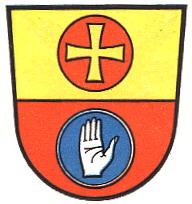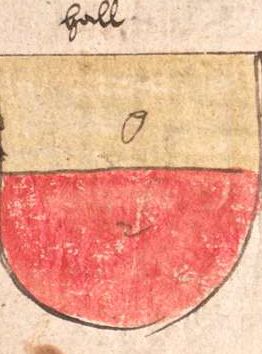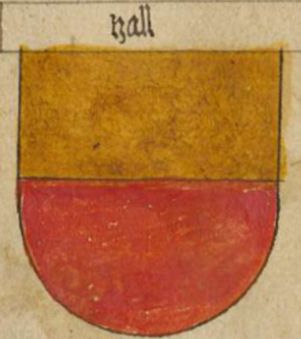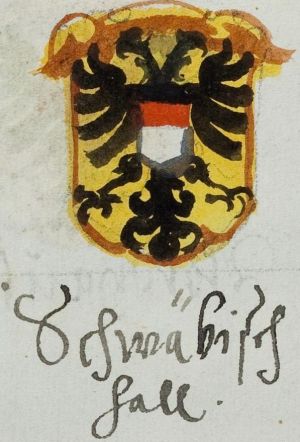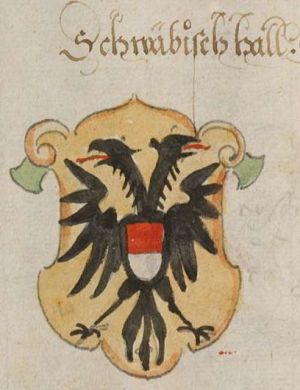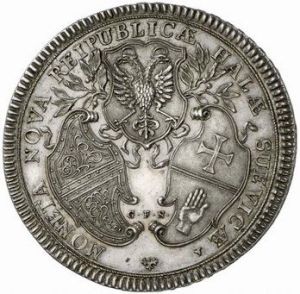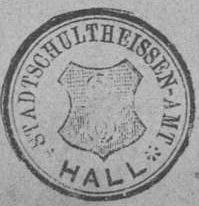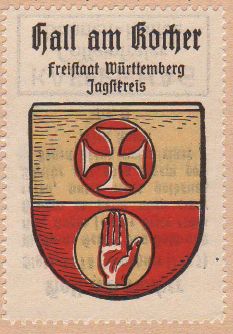Schwäbisch Hall
This page is part of the German heraldry portal Deutsche Wappensammlung |
Heraldry of the World |
|
German heraldry:
|
Selected collector's items from Germany:
|
SCHWÄBISCH HALL
State : Baden-Württemberg
District (Kreis) : Schwäbisch Hall
Additions : 1970s Bibersfeld, Eltershofen, Gailenkirchen, Gelbingen, Sulzdorf, Tüngental, Weckrieden
| German |
In geteiltem Schild oben in Gold eine rote Scheibe, darin ein goldenes Tatzenkreuz, unten in Rot eine silberne Rechthand in silbern bordierter blauer Scheibe . |
| English | Hall No blazon/translation known. Please click here to send your (heraldic !) blazon or translation |
Origin/meaning
Schwäbisch Hall became a city in 1276 and was part of Staufen. In 1803 it became part of Württemberg. In the Middle Agres it was one of the most important minting towns. The local coin, Heller, became one of the most important coin-names in Germany. The oldest seal of the city, dating from 1228 already showed the cross and hand of the coins. Three coins were shown on this seal. A later seal, dating from around 1270 showed the two coins as in the present arms (but not placed in a shield). As arms the two coins are used already in the 15th century, as are the colours of the arms. Besides the arms with the coins, sometimes a shield with the imperial eagle was used. The arms are thus not basically changed since the 16th century.
| The arms in the late 15th century |
The arms in a manuscript +/- 1530 |
| The arms in a 16th century manuscript |
The arms in a 17th century manuscript |
| The arms on a 1742 coin | |
| The municipal stamp shown in 1892 |
The arms by Hupp in the Kaffee Hag albums +/- 1925 |
Contact and Support
Partners:
Your logo here ?
Contact us
© since 1995, Heraldry of the World, Ralf Hartemink 
Index of the site
Literature : Stadler, 1964-1971, 8 volumes.


